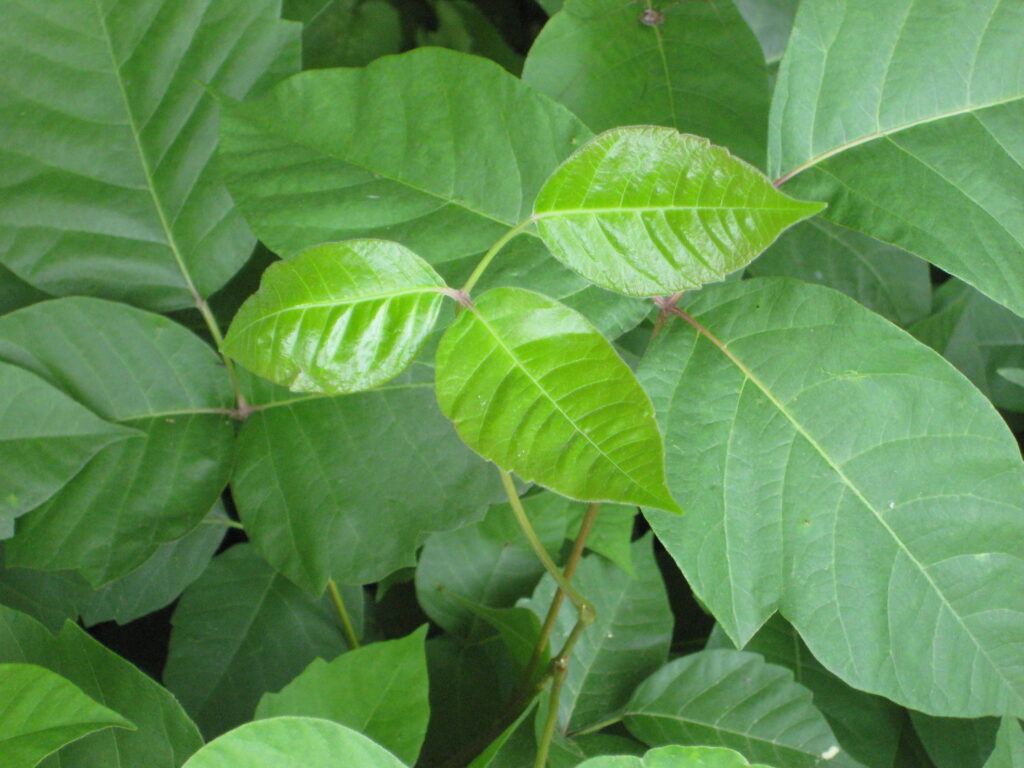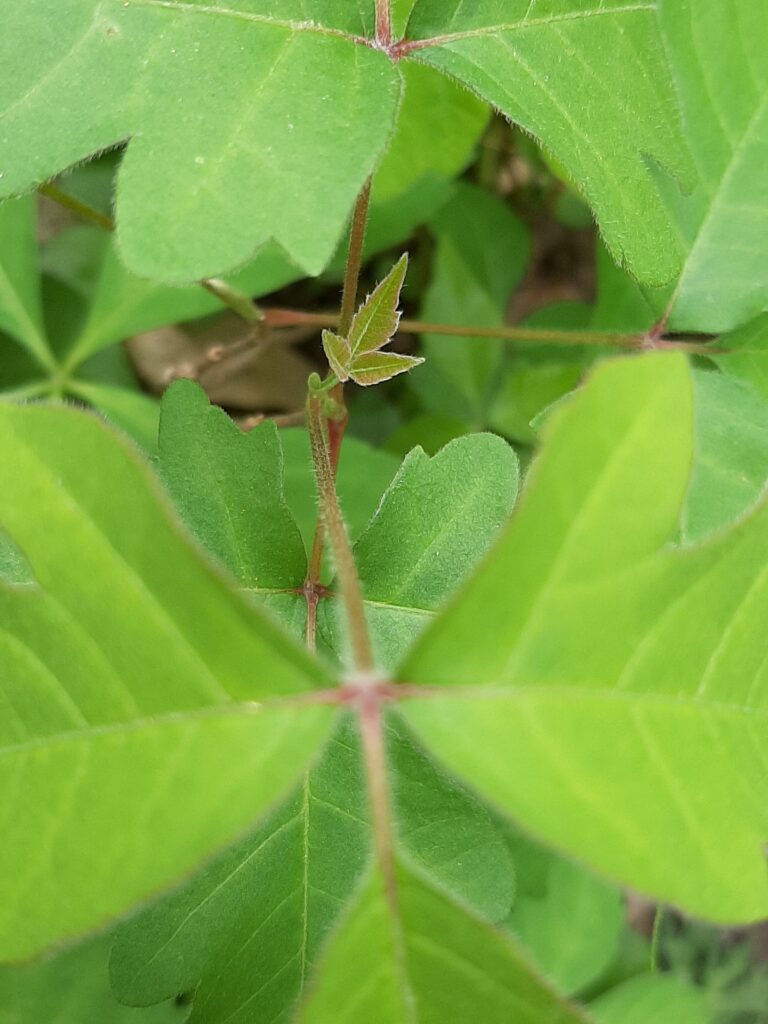 Oh, no. What if you’ve gone and done it—brushed up against a vine, waded through a cluster of poison ivy? Time is of the essence. The best hope to avoid a rash is to wash off the oil as soon as you can.
Oh, no. What if you’ve gone and done it—brushed up against a vine, waded through a cluster of poison ivy? Time is of the essence. The best hope to avoid a rash is to wash off the oil as soon as you can.
Use lots and lots of water—cool, not hot. Hot water opens the pores and allows the urushiol to sink deeper into the epidermis. If you’re far from civilization, even splashing around in a stream or a dip in the lake will help. Flooding the area with water right away is the best chance to clear off the urushiol. So swim, shower, hose down, do whatever you can to get the oil off your skin.
Should you use soap? Experts differ. Soap can help shift the oily urushiol but also strips your skin of its own protective oils. Authorities also differ on using alcohol to remove urushiol. It can help remove the oil, but like soap, alcohol also strips the skin of its natural oils, leaving it vulnerable if any speck of urushiol touches it.
Gasoline, kerosene, or lighter fluid are also sometimes recommended for washing off urushiol. Don’t. Do. It. While it’s true that these fluids could help remove urushiol, the hazards far outweigh the benefits. Toxins are quickly absorbed through the skin, and these products are highly toxic. Gasoline rubbed directly on skin can cause redness, rashes, and itching—it’s a classic case of the cure being worse than the disease. Not to mention the risk of setting yourself on fire.
After a while, it’s too late anyway, no matter what preventive measures you take. The urushiol forms a chemical bond with the cells of your skin, and after a while (variable—anywhere from a few minutes to an hour or so) the urushiol is so tightly bonded that it is impossible to dislodge.
So, once you’ve washed off as much urushiol as possible, then what? There’s nothing to do but wait and see what develops…
What if you do get a rash?
If you find yourself sporting a rash, here’s what you don’t want to do: Google cures for poison ivy. At least not without a healthy dose of skepticism. Remedies offered by the Internet are as numerous as they are mindboggling. Please, do yourself a favor and avoid any website that mentions lighter fluid. Dried pig excrement is also unlikely to have a beneficial effect. There’s almost nothing that hasn’t been suggested as a cure for the intense itchiness caused by poison ivy. Mud. Urine. Vinegar. Vodka. Teardrops. Scotch. Joint compound. W-D 40 oil. Bourbon. Witchcraft. Prayer.
The most effective cures all have one thing in common—they gently dry out the skin without irritating it additionally. Never cover the rash with band-aids or any sort of bandages—that will only keep the damaged skin moist, possibly leading to infection. While it seems as though a thick, soothing salve would help, you want to dry the skin, not moisturize it. Oils are not helpful, so avoid lotions or creamy soaps. Gently apply a substance that has drying properties—calamine lotion and witch hazel being a couple of classic cures.
Another good way to soothe the itching is to get wet. Some people swear by a cool bath or shower, others by a hot one. Cool or tepid water soothes the itch for a few moments. For longer-lasting relief, though, some people swear by a hot shower, hot as you can stand it. Seems like hot water is the last thing you would want to soothe a burning itch, but heat does several things.
First of all, heat causes tiny blood vessels in your skin to widen, bringing more blood to the area. This can cause the red rash to get temporarily redder and slightly more swollen. But the increased blood flow is a powerful aid to healing. As Lisa Shea, author of a helpful website on skin issues, puts it, “It’s like having an accident on a highway and having a traffic jam—then suddenly doubling the width of the highway so more ambulances can get in.”
Even more important for short-term itch relief, heat overrides the constant message of itch itch itch which is flowing along your nerves to your brain. A new message—HOT—diverts the brain, directing its attention to a potential hazard. It takes a while for the itching to start up again. Some people claim a really hot shower can relieve the itching for several hours.
Whatever the temperature, you can’t go wrong by taking a shower or bath. There is no urushiol contained in the blisters, so you won’t spread the rash by showering, bathing, scrubbing, sweating, scratching, etc.
Obviously, be careful not to use water so hot that you burn your skin. I’ve found that many PI websites and experts ban hot showers, but they’re warning against taking a hot bath before the rash develops—which is indeed a bad idea. Hot water opens your pores wide and lets them drink in even more urushiol. That’s why you want to wash off with cool water, not hot, immediately after contacting the plant. After the rash develops, hot water can be sooooo nice.
Let air and sunlight do their healing work, and wear as little clothing as you can decently manage over the affected areas. The best cure for a mild rash is the annoying phrase “a tincture of time.” 





Recent Comments